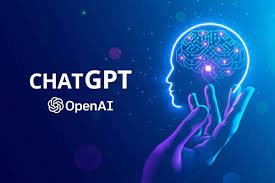ChatGPt: Make your life easy with ChatGPT.
Stories about ChatGPT have recently dominated the news cycle. After becoming publicly accessible in December 2022, the artificial intelligence language processor quickly outpaced industry leaders like Instagram and TikTok in popularity.
In contrast to TikTok, which took nine months, and Instagram, which took two and a half years to reach this milestone, ChatGPT has amassed 57 million active monthly users since its launch and is expected to reach 100 million in January.
What is ChatGPT?

The artificial intelligence system ChatGPT was created by the OpenAI company. Elon Musk, Sam Altman, Greg Brockman, Ilya Sutskever, and Wojciech Zaremba founded the OpenAI organization in 2015 to research artificial intelligence. OpenAI offers other services, but ChatGPT was only released in 2018.
The GPT-3 model, the third iteration of the natural language processing project, serves as the foundation for ChatGPT’s architecture. The system, a large-scale language model that has already been trained, uses the GPT-3 architecture to comb through a sizable amount of internet data and sources to build its knowledge base.
Despite having a wealth of knowledge, this AI differs from other types of technology because it can speak.
It has been honed to perform various language generation tasks, including translation, summarization, text completion, question-answering, and even human diction.
Important vocabulary
Several terms describe high-level AI, each needing explanation.
Below is a glossary of key terms that will be helpful when explaining ChatGPT.
- The goal of the computer science discipline known as artificial intelligence (AI) is to develop machines that can perform tasks just like people. Examples of typical AI applications include speech recognition, language translation, and visual perception.
- The field of artificial intelligence known as “NLP” (Natural Language Processing) focuses on language-based interaction between humans and machines. NLP uses algorithms and models to analyze, understand, and use language similar to human speech.
- A machine learning algorithm, a neural network, imitates how the human brain functions. To solve problems, identify patterns, and gather data, artificial intelligence (AI) uses neural networks to mimic the brain’s neural pathways, where information is stored, and functions are carried out.
- Transformer: A transformer is a structure in a neural network created for NLP tasks that use methods to analyze input and produce output.
- An OpenAI-developed transformer-based language is called “generative pre-trained transformer” (GPT). The program’s language processor and generator are now available in their first iteration, which is unique to OpenAI and capable of creating text in a human-like manner.
- The GPT-3 pre-trained Transformer 3 is based on the OpenAI-developed Transformer network architecture. It is the most dynamic version of GPT, with self-attention layers that permit multitasking, real-time adjustment, and more authentic output.
- Pre-training: As the name implies, this was the work that OpenAI needed to perform to train the neural network to perform as desired before it was ready for use by the general public.
- The fine-tuning phase of training comes after pre-training. Using a smaller, more focused task and more accurate data, the computer program takes a single task and refines it. It is the reason ChatGPT functions so well.
- An application programming interface, or API, helps the program maintain consistency. It is a guide that outlines the steps involved in building each application. It enables the successful integration of new system additions.
How does ChatGPT work?
ChatGPT uses a sizable neural network to generate the human-like language it uses for communication. But how does that process operate?
The following gives a step-by-step explanation of the process:
- Processing of input: A human user types instructions or inquiries into ChatGPT’s text field.
- Before analysis, the program tokenizes the inputted text by dividing it into individual words.
- The transformer portion of the neural network receives input in the form of tokenized text.
- The encoder-decoder must be carefully observed: The transformer transforms the input text into an encoded form and generates probability distributions for all possible outputs. The distribution then generates the output.
- Text output and generation: ChatGPT generates a text response for the human user after producing its output response.
What features does ChatGPT offer?
The extensive capabilities of ChatGPT will alter the landscapes of many industries.
The computer program can complete tasks like:
- Text generation.
- Text completion.
- Question-answering.
- Summarization.
- Text translation.
- Conversational AI.
- Sentiment analysis.
- Named entity recognition.
- Part-of-speech tagging.
What ought you understand about ChatGPT?
A powerful AI program called ChatGPT has significantly contributed to the natural language processing field. Its most impressive characteristic may be its ability to analyze human input and produce output that resembles a human’s.
Many industries can use ChatGPT’s applications, ranging from automation to research to language translation and text summarization. As with any other technology, remember that ChatGPT has limitations, so it’s best to double-check its functionality and have a backup plan.













Post Comment